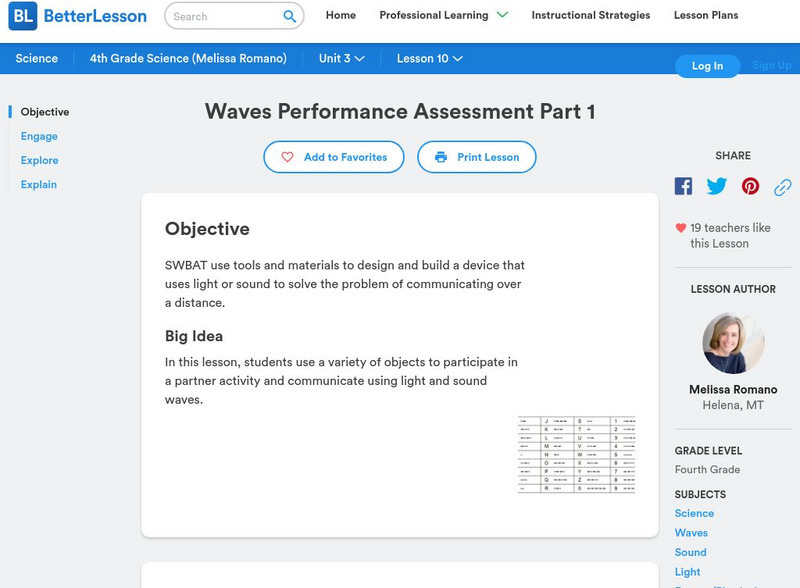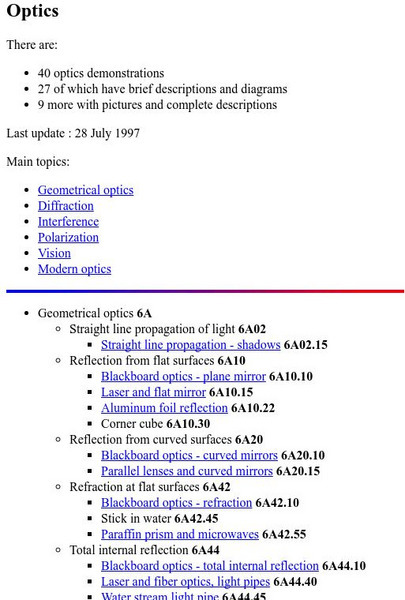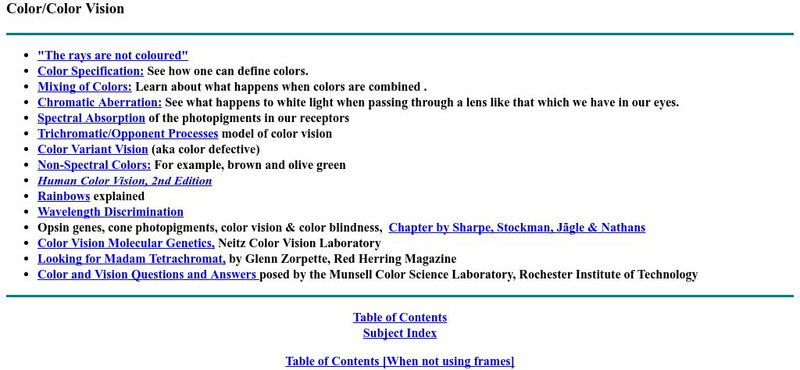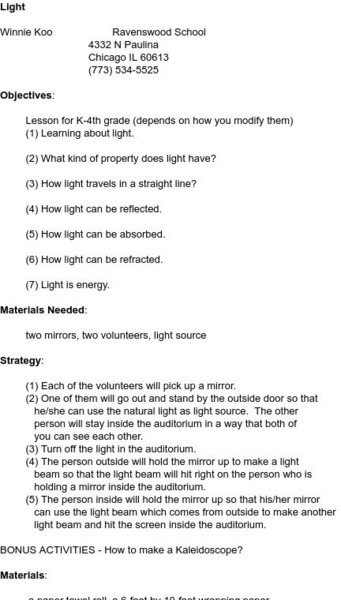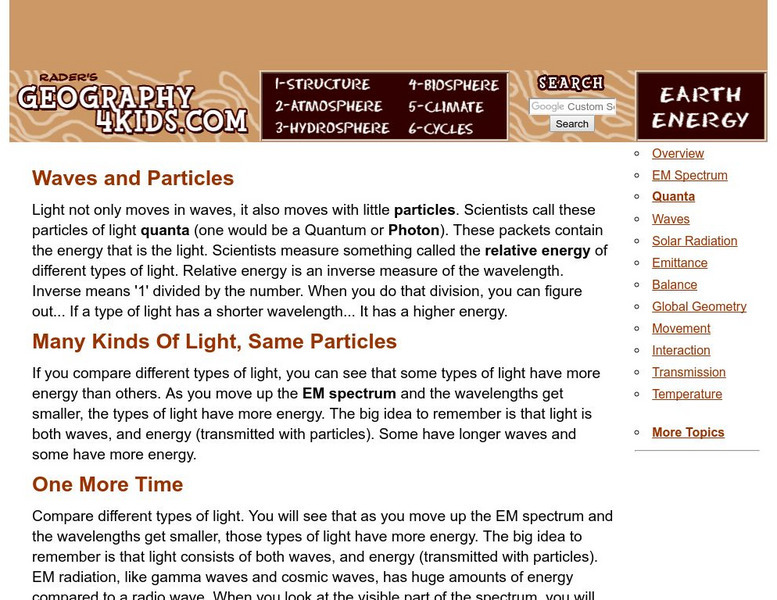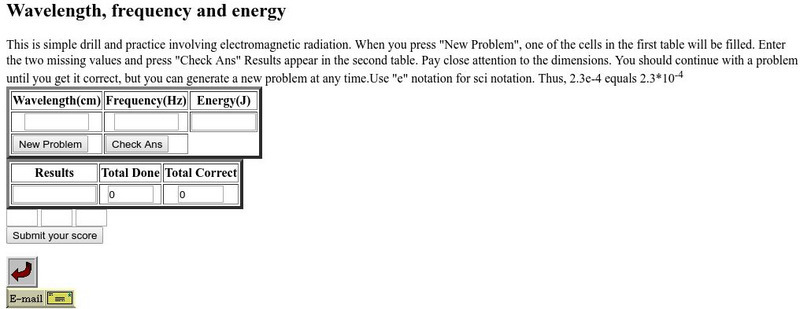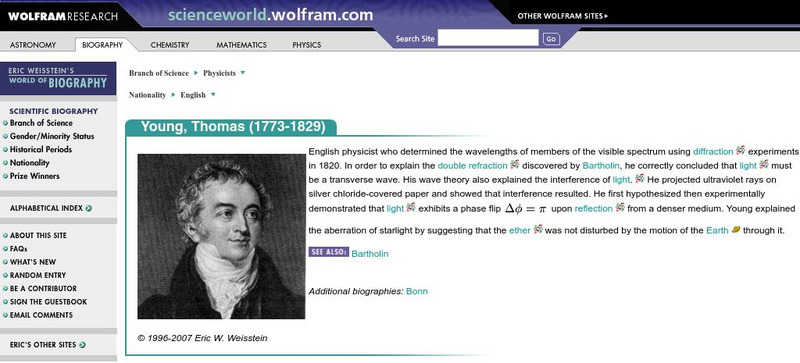Better Lesson
Better Lesson: Waves Performance Assessment Part 1
Students will use a variety of objects to participate in a partner activity and communicate using light and sound waves. Resources include a video, pictures and videos of the lesson in action, and examples of student work.
University of Maryland
University of Maryland: Optics, Electromagnetic Waves
This site from the University of Maryland provides part of an anecdotal history of optics and the study of light. Extremely thorough treatment of how scientists came to believe in the wave nature of light, the idea of an electromagnetic...
University of Maryland
University of Maryland: Optics Highlights: Wave Optics
Part of an anecdotal history of optics and the study of light. Extremely thorough treatment of how scientists came to believe in the wave nature of light. Includes a short biographical sketch and discusses the work of Thomas Young...
BBC
Bbc: Gcse Bitesize: Why Do Scientists Think That Light and Sound Are Waves?
Light travels as transverse waves and can travel through a vacuum. Sound travels as longitudinal waves and needs to travel through a solid, liquid or gas. Read about the properties of light and of sound, and learn the differences between...
Boston University
Bu: Optics Demonstrations: Polarization
Several short descriptions of demonstrations pertaining to polarization principles. Suitable as a supplement for a teacher lesson plan or as an idea-generator for a student project.
York University
York University: Color and Color Vision
York University provides an index page to several other pages on the topic of color and color vision. The pages are part of an online "book." Many graphics and explanations.
Science and Mathematics Initiative for Learning Enhancement (SMILE)
Smile: Light and Vision
Lesson plan should be used for intermediate students. Students work in pairs or groups to create a shoe box that will bend light.
Science and Mathematics Initiative for Learning Enhancement (SMILE)
Smile: Light (K 4)
This site provides two activities that young scholars can do in class. One uses mirrors to reflect light beams whole another is making a kaleidescope.
Trinity College Dublin
The History of Mathematics: Young
A short sketch of the life and work of Thomas Young (1773-1829 CE). Traces early upbringing and education and his scientific discoveries and contributions.
Geography 4 kids
Geography4 kids.com: Waves and Particles
Understand how light moves in small particles in the electomagntic spectrum.
Exploratorium
Exploratorium: Science Snacks: Bubble Tray: Create Giant Bubbles
With this fun bubble tray experiment, students create giant bubbles and learn about surface tension and light interference.
Synopsys
Synopsys: A Gentle Intro to Optical Design: Why Is the Sky Blue?
Discusses Rayleigh scattering in plain language and attributes the blueness of the skies to this phenomenon. Discussion of scattering is just one topic of many on this lengthy page of optical topics.
Science and Mathematics Initiative for Learning Enhancement (SMILE)
Smile: Light (Intermediate)
Lesson plan for various group activities about light. Provides demonstration and directions for the plans along with assessment.
Optical Society
Optical Society of America: Optics for Kids: Interference in a Ripple Tank
An investigation, using a ripple tank, into how waves behave when they collide with each other. With an explanation of what is observed, and a link to an article on refraction.
Optical Society
Optical Society of America: Optics for Kids: Shimmering Lenses
An experiment using Jell-O to create lenses, to see how light behaves with flat, concave, and convex lens surfaces. With an explanation of what is observed, and a link to an informative article on lenses.
California State University
Electronic Homework: Wavelength, Frequency and Energy
Users solve computational problems concerning the wavelength, frequency, and energy relationships. Fill in the missing values and submit your answers to be corrected.
Wolfram Research
Wolfram Science World: Young, Thomas
This site from ScienceWorld provides a very short but factual biographical sketch of Thomas Young (1773-1829 CE) and describes his most notable scientific discoveries and contributions. Links are also provided throughout for additional...


